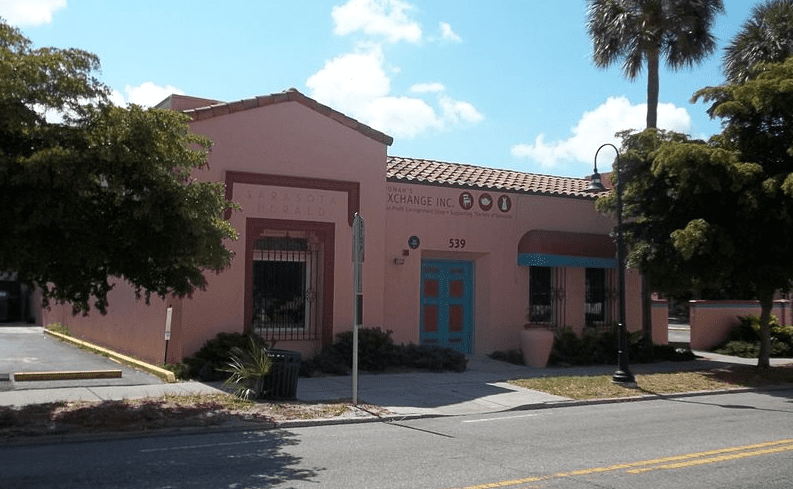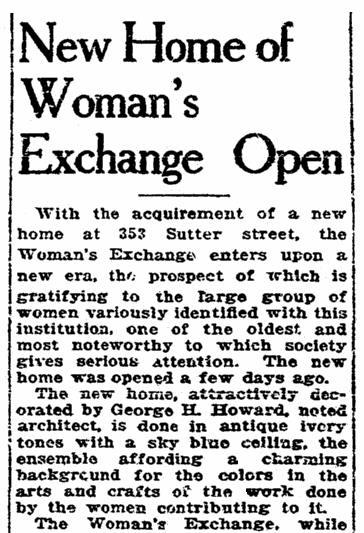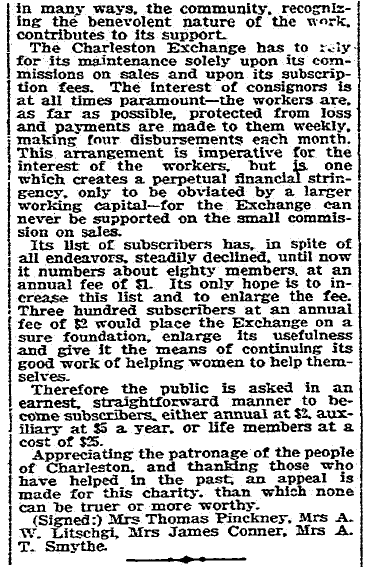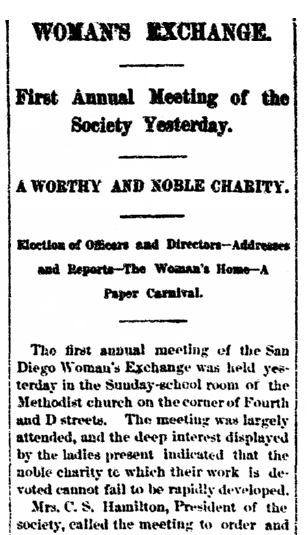Introduction: In this article, Gena Philibert-Ortega shows how newspaper articles about the charity organizations your female ancestor belonged to may give you valuable personal information about her that you can’t find anywhere else. Gena is a genealogist and author of the book “From the Family Kitchen.”
Having trouble researching your 19th or 20th century female ancestor? Have you considered her everyday life? Sure, government records such as birth, marriage, death and the census help to learn about your ancestor. But what about her everyday life? Who was she personally? What activities did she enjoy? What causes was she passionate about? What groups did she belong to?

Organizational records and documents that reveal membership activities are some of the least-used records in genealogy. Why? Well, often because they are more difficult to locate and access when doing genealogy research. These are archival records that are rarely digitized. So if you are unable to access those original records, where can you find this information about your ancestor?
The answer: old newspapers, such as those in GenealogyBank’s Historical Newspaper Archives. Newspapers document the activities of a community, including organizations and their members. Your ancestor’s hometown newspaper can be a rich source for learning about a female ancestor’s everyday activities and memberships.
Women took part in all types of membership groups that spanned politics, religion, leisure and social causes. Many women joined benevolent groups that provided service to others, including less fortunate women. Let’s take a look at one example: the Woman’s Exchange.
History of the Woman’s Exchange
The first Woman’s Exchange was founded in Philadelphia in 1832. Its premise was simple: “women helping women.” The female founders wanted to do something about the position women found themselves in when they were faced with supporting their family but unable to do so. Then, as today, women who have relied on a husband’s income may find themselves quickly spiraling into poverty due to a loss of income, marital separation, divorce or death of that husband. Author Kathleen Waters Sander writes in her book The Business of Charity that those founding women wanted to provide women a “discreet work alternative to protect peers from the ‘rough and unkind treatment to which they are frequently exposed in their efforts to obtain employment.’*
The Woman’s Exchange charity foundation that started in Philadelphia grew to other Exchanges across the United States. These businesses showcased consigned women’s goods while adjoining tea rooms provided meals and refreshment. Woman’s Exchange businesses benefitted both women who provided managerial and clerk functions as well as those who consigned items.
As with other organizations, the story of the Woman’s Exchange can be found in the pages of GenealogyBank’s Historical Newspaper Archives. When researching the history of the Woman’s Exchange, it quickly becomes apparent that a variety of newspaper articles were published about the charity organization, many with the names of the women involved – these old news articles can provide a window into your ancestor’s life you won’t find anywhere else.
Interviews
Many organizations and their members find themselves at one time or another being the subject of a newspaper interview piece. These articles typically report on the history and services provided by the organization. For example, this syndicated interview published in a 1928 Kentucky newspaper with Mrs. Edward I. Cudahy, then president of the Chicago Woman’s Exchange, is such an article. An added bonus is that it includes her photograph.

All types of women were involved in the Exchange movement: the women needing financial assistance who consigned goods; the society women who managed the enterprise and sat on its board; and the women (and men) who donated money as “subscribers.” In most cases, you are more likely to find newspaper articles that list the society women who administered these programs rather than the women who needed the financial benefits this marketplace provided. So, for example, it’s not unusual to find newspaper articles where the names of the women on the board, along with their position, are listed – as in this 1924 article from a California newspaper. The founder of the San Francisco Exchange, Mrs. M. H. (Katherine) de Young, is also named.

Women involved in raising funds and administering the Exchange could also be found writing letters to newspapers requesting donations. In this 1907 appeal for subscribers to the Exchange in Charleston, South Carolina, we find the names of several women involved in the cause.

Names Lists
As genealogists, we are always looking for “names lists.” Lucky for us, all kinds of newspaper articles can provide us those coveted lists of names. Old newspaper articles about annual meetings provide a who’s who of the movers and shakers in any organization, as well as information about the meeting itself.

In addition to newspaper articles, search for other records documenting meetings of your ancestor’s organization. Further research involving annual meeting reports provides details about officers and others who are vital to the running of any organization. Such organizational records may be found through the organization, should it still exist, or archived at a local historical society or other repository.
Today about 20 Woman’s Exchanges are open for business in 12 states. These Exchanges still operate under the same premise of women helping women. In my recent visit to the Woman’s Exchange in St. Augustine, Florida, more than 100 registered consigners were benefitting from selling everything from jewelry and jams to potholders and the Exchange’s own community cookbook.
What organization was your female ancestor a member of? To get some ideas of what groups she may have belonged to, identify those affiliated with her religion, children’s school, and husband’s military service or occupation, as well as a cause she felt passionate about. It’s through this extra genealogy research work that you can find richer, more personal information about her – including her name – in the newspaper.
—————————-
* Sander, Kathleen Waters The Business of Charity: The Woman’s Exchange Movement, 1832-1900. Urbana: University of Illinois Press, 1998 P. 11.
Related Female Ancestor Research Articles:
